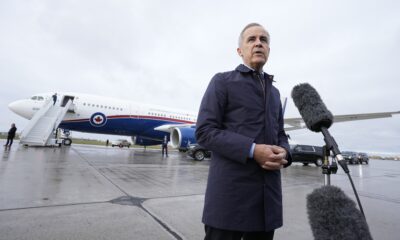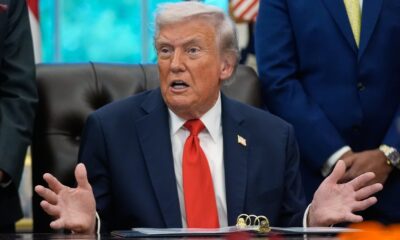Business
Fed Faces Stagflation Risks as Job Growth Weakens in August

Recent economic data has raised alarms regarding a potential shift in the U.S. economy as the August jobs report revealed unexpected weaknesses. This development has prompted a shift in market focus from inflationary pressures to concerns about employment stability. Following significant downward revisions to previous job figures, investor anxiety has surged, indicating a softer labor market.
The Federal Reserve is now confronted with a challenging scenario, as rising inflation forecasts complicate its decision-making. Reports indicate that despite anticipated increases in both the headline and core Consumer Price Index (CPI) for August, the Fed may prioritize cutting interest rates to support the faltering job market. This decision reflects a broader concern: the risk of stagflation, a situation characterized by stagnant economic growth paired with high inflation.
The weak job numbers in August have triggered warnings of a recession, raising fears that the Fed may soon face its worst nightmare—stagflation. Investors are closely monitoring how the Fed will navigate this complex landscape, balancing the need for economic growth against the backdrop of rising prices.
In discussions with members of the investing community, including Michael Kramer, founder of Mott Capital, insights have emerged on the implications of these economic trends. Kramer’s group, Reading The Markets, emphasizes the importance of understanding macroeconomic drivers and their effects on various asset classes.
Kramer, who has over 30 years of experience in market analysis, highlights that the current economic indicators suggest a potential shift in strategy for the Fed. “The focus will likely be on stimulating job growth, even as inflation concerns persist,” he stated.
While the Fed traditionally aims to control inflation, the recent labor market data may compel a reevaluation of priorities. The anticipated CPI rise, expected in the upcoming report, could further complicate this decision. As the central bank grapples with these challenges, the implications for investors and the broader economy remain significant.
The situation underscores the delicate balance faced by policymakers as they navigate unprecedented economic conditions. The Fed’s upcoming decisions will be crucial in determining the trajectory of the U.S. economy and its ability to avoid the pitfalls of stagflation.
As analysts and investors closely watch these developments, the need for informed decision-making has never been more critical. In this environment, resources such as Kramer’s Reading The Markets provide valuable insights, highlighting the dynamic interplay between economic indicators and investment strategies.
In conclusion, the unfolding economic landscape presents both challenges and opportunities. With the Fed at a crossroads, the coming weeks will likely reveal more about how it intends to address the dual threats of stagnation and inflation.
-

 World3 months ago
World3 months agoScientists Unearth Ancient Antarctic Ice to Unlock Climate Secrets
-

 Entertainment3 months ago
Entertainment3 months agoTrump and McCormick to Announce $70 Billion Energy Investments
-

 Lifestyle3 months ago
Lifestyle3 months agoTransLink Launches Food Truck Program to Boost Revenue in Vancouver
-

 Science3 months ago
Science3 months agoFour Astronauts Return to Earth After International Space Station Mission
-

 Technology2 months ago
Technology2 months agoApple Notes Enhances Functionality with Markdown Support in macOS 26
-

 Top Stories2 weeks ago
Top Stories2 weeks agoUrgent Update: Fatal Crash on Highway 99 Claims Life of Pitt Meadows Man
-

 Sports3 months ago
Sports3 months agoSearch Underway for Missing Hunter Amid Hokkaido Bear Emergency
-

 Politics3 months ago
Politics3 months agoUkrainian Tennis Star Elina Svitolina Faces Death Threats Online
-

 Technology3 months ago
Technology3 months agoFrosthaven Launches Early Access on July 31, 2025
-

 Politics3 months ago
Politics3 months agoCarney Engages First Nations Leaders at Development Law Summit
-

 Entertainment3 months ago
Entertainment3 months agoCalgary Theatre Troupe Revives Magic at Winnipeg Fringe Festival
-

 Politics2 weeks ago
Politics2 weeks agoShutdown Reflects Democratic Struggles Amid Economic Concerns





















